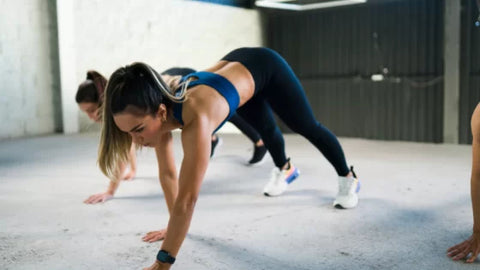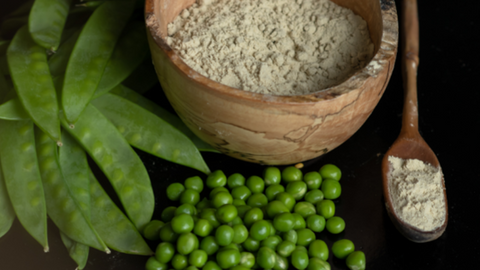Finding the right cardio for a bodybuilding strategy can be challenging. Cardiovascular exercise is a great way to burn calories and lose fat. However, intense cardio training can present the risk of losing hard-earned muscle gains. Naturally, the fear of losing muscle deters many strength athletes from committing to a robust cardio program, despite its numerous health benefits.
This is when High Interval Intensity Training (HIIT) should be considered. HIIT is a form of cardio that’s gained popularity in the bodybuilding community because it’s been shown to support increased muscle development while burning fat.
WHAT IS HIGH INTENSITY INTERVAL TRAINING (HIIT)?
High Intensity Interval Training (HIIT) is aerobic training that switches from short, intense outbursts of activity followed by longer durations of lower intensity exercise.
AKA Tabata
HIIT exercise is often referred to as Tabata training. Named after the interval training specialist Izumi Tabata, Tabata training is the most widely used form of this type of exercise. It is typically practiced in most gyms throughout North America.
During a Tabata block, there are 20 seconds of full body, high intensity exercise followed by 10 seconds of low intensity activity. This cycle is repeated for four minutes and makes up one Tabata block, or cycle. Most Tabata training sessions allow for 5 – 6 Tabata blocks with a 60 – 120 second rest period between each cycle.
MAINTAIN MUSCLE GAINS
Recently, a study to determine the combined effects of HIIT and strength conditioning was conducted. Over 12 weeks, the study’s participants engaged in regular strength training exercises as well as HIIT sessions.
What they found was that the participants in the resistance training and HIIT group experienced several physical improvements, including:
- increased cardio-respiratory fitness
- improved insulin sensitivity
- greater mitochondrial respiration
- Increases in fat-free mass
- Increased muscle strength
Although none of the study’s participants were active bodybuilders training for their next competition, results like these support how HIIT is a solid option for strength athletes. Those looking to improve their cardiovascular health without compromising their weight lifting goals should consider these efficient but intense workouts.
QUICKLY LOSE FAT WITH HIIT
Unlike more traditional cardio activities, such as jogging, aerobics or kickboxing, HIIT can burn more fat. A 1994 study examining the impact of exercise intensity on body fat levels, found that young adults who spent 15 weeks on a HIIT workout program saw more fat loss than the other group of young adults exposed to 20 weeks of endurance training.
Additionally, it was found that those within the HIIT group expended less energy compared to those in the endurance group. This means that HIIT can be a way to lose fat while expending fewer calories than endurance-based aerobic exercises.
Bodybuilders should use that information when determining the best way to approach their next cutting phase.
MAXIMIZE TRAINING EFFICIENCY
HIIT sessions typically take less time, which means you can have more time to recover and prepare for the next heavy weight lifting session. Instead of spending upwards of an hour on the treadmill to improve cardiovascular health, you can opt for 20 – 30 minutes of HIIT.
It improves your heart, lungs, and resting metabolic rate in less time than continuous exercises include.
REDUCE MUSCLE FATIGUE
To get those hard-won, just one more reps in muscles need a way to combat fatigue. Determination, supplements, and expert coaching are invaluable tools for keeping muscles working at a top-level, but, so is increasing skeletal muscle buffering capacity through regular HIIT.
The body’s muscle buffering capacity is the ability of a muscle to resist changes in pH brought on by the buildup of lactic acid and hydrogen ions during exercise. Bodies with a higher buffering capacity become fatigued less quickly.
In elite athletes, HIIT has been proven to:
- Increase skeletal muscle buffering capacity
- Lengthen time to fatigue
- Improve peak power output
ALLOW FOR SUFFICIENT RECOVERY TIME
HIIT is meant to burn through as much energy as possible in every 20-second interval. As such, allowing time to rest between training sessions is critical for avoiding injury and maximizing results.
It’s not recommended that bodybuilders carry out a weight lifting routine on the same day as a HIIT session.




